In Praise Of Anchovies: If You Don’t Already Love Them, You Just Haven’t Yet Discovered How Good They Can Be
by Ken Gargett
A great many years ago, when I was young and impressionable, I read James Mitchener’s The Drifters and as much Ernest Hemingway as I could find.
I loved both, but they gave me the idea that all I had to do when I got old enough was get myself to Europe and life would be one endless summer of travel: from Spanish cafés, where one swapped stories with matadors, to the shores of the Mediterranean, where one would enjoy a quiet dinner with friends by the campfire and goatskins filled with wine made from vineyards in the hills behind, while a little further down the beach local fisherman would be hauling in nets of silver fish gleaming in the moonlight as they happily sang local songs meant to accompany the hauling in of fishing nets (I assumed that there was such a thing).
I did say I was young and impressionable.
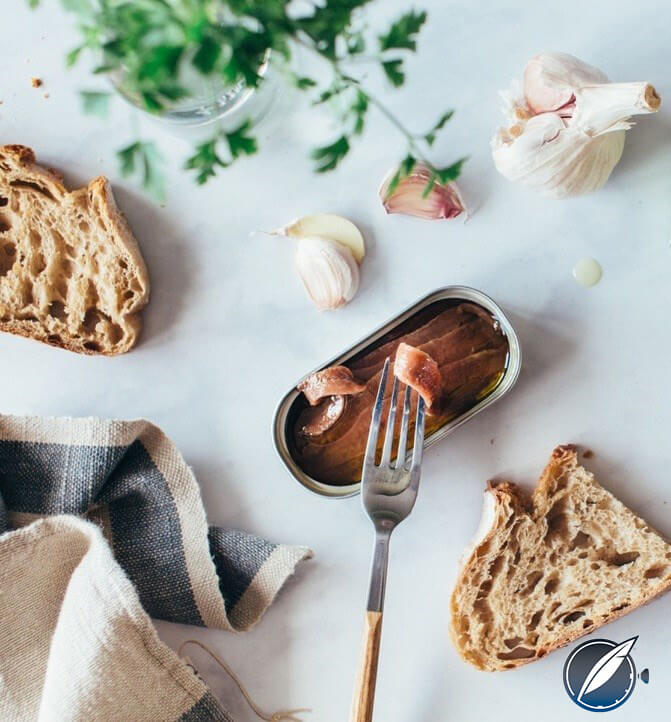
In these delusional dreams, the fish were always anchovies or sardines, never bigger alternatives like tuna. I think that was because I always assumed tuna was serious fish for proper fishing, while a net full of squirming anchovies was the sort of thing one simply pulled from the sea, almost at will. But they were always silver and thrashing about and made wonderful snacks freshly grilled.
At least I got something right. I just didn’t realize that these little fish were true delicacies that could elevate an enormous array of dishes to a new stratosphere.
For many people, anchovies are one of those foods to be avoided like the plague. Only seen on bad pizza and even then something that needs to be picked off and disposed of. I love anchovies on my pizza, but that might be because I love anchovies and I have never really been much of a pizza fan. Sure, this is an extremely powerful fishy/salty taste so I get why some may recoil. Those who don’t get excited by oily fish are also likely to take a step back.
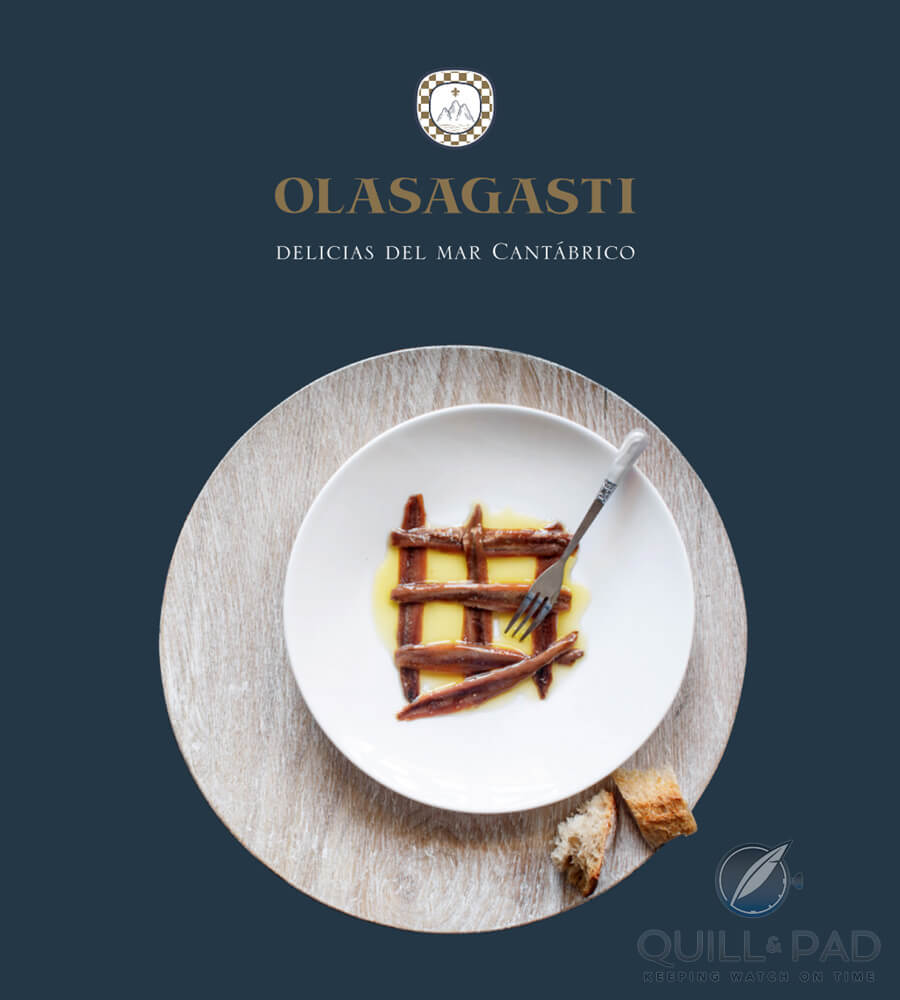
If you get the chance, visit some of Spain’s great restaurants and see what their monumentally talented chefs can do with anchovies. It isn’t tossing them on a pizza.
Some years ago in Barcelona, I was keen to visit Tickets, the stellar restaurant of Albert Adrià, which had opened to great acclaim. Adrià is the brother of Ferran (of El Bulli fame – it has often been said that without the input of Albert, El Bulli would have never been what it was – he is undoubtedly a supremely talented chef in his own right).
The problem was that such acclaim ensured Tickets was totally booked out. I spoke with a good friend of mine in Madrid who had worked with Ferran to see if he had any thoughts or could sneak me in, but Ferran was away somewhere at the time and my last night in Spain was the next day.
My friend concocted a plan. Get there as early as you can, before anyone else, in case of cancellations and because there are always a few seats kept aside. Tell them that the Australian ambassador recommended that you attend (a small white lie) and see if that helps.
So I turned up around 6:00 pm – being Spain, the restaurant was not planned to open until 8:00 pm but I was more than happy to sit around if it got me in. Unfortunately, it seems many others had the same idea and I was at the back of a lengthy queue. Every group who spoke to the gentleman at the door was given a sad shake of the head and sent on their way. I did not fancy my chances, although I was the only “single,” so just maybe?
When I reached the gatekeeper, I started muttering about the Aussie ambassador and was greeted with a nod and a smile and ushered in – announcing that I would have to vacate by 8:00 pm and would not be able to go to the dessert room, but I was so delighted that was fine.
As it happened, I did make the dessert room: imagine if a large bomb went off in Willy Wonka’s kitchen and you are only getting close to what a magical place it was. Don’t miss it. Worth the entrance alone. If you are headed to Barcelona, don’t miss it.
The food was as astonishing as I had hoped. I got to briefly meet Adrià, and then it dawned on me: they thought I was the Australian ambassador to Spain. I kept very quiet about that.
Anyway, among the many spectacular dishes that evening – the place is sort of a super tapas circus, if that makes sense – was Adrià’s famous white anchovy and yuzu cod roe on crispy chicken skin.
If you are someone who picks the anchovies off your pizza, then your world is about to change. You can find the recipe online, but good luck. Mentioning that is a bit like saying that the latest mountaineering magazine has a map up Mount Everest. Go and climb it. Actually, climbing Everest might be easier. And quicker.
My favorite restaurant of all time is in Girona, not far from Barcelona, El Cellar de can Roca, and I have been fortunate to have visited several times. If a small bonsai tree arrives at your table, look again. The “fruit” will be anchovy-wrapped olives. Again, what these guys do with this wonderful fish will amaze you. Actually, what they do with everything is amazing.
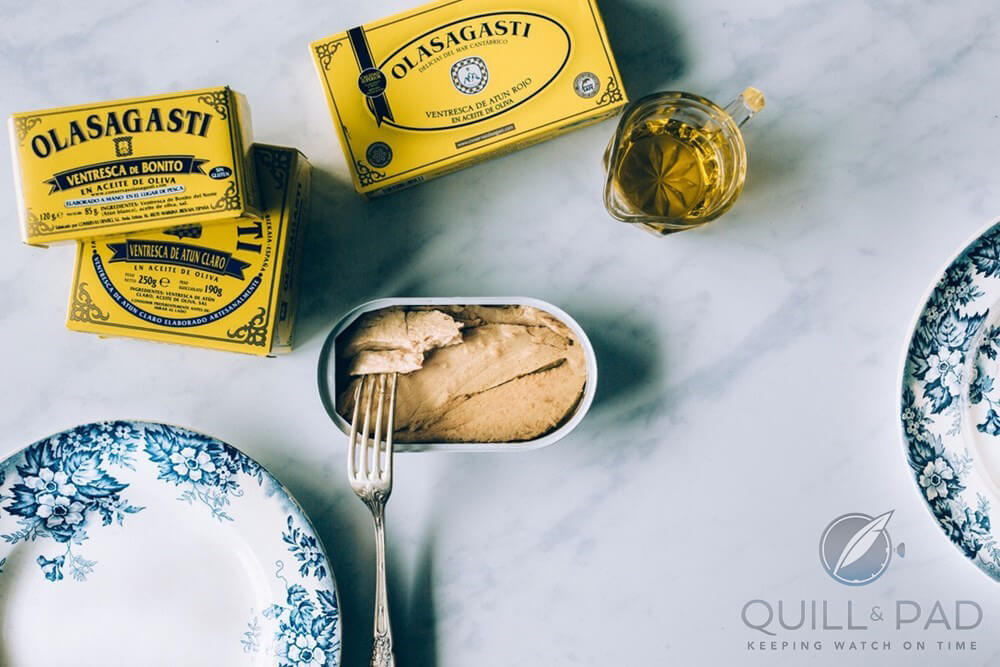
What is an anchovy?
As with so many things, there are anchovies and anchovies, although truth be told the budget rarely allows me to dip into the really good stuff and mostly I use the basic offerings from the supermarket – they work well enough most of the time, but there come occasions when you need better. Think of it like wine. Most days, a good-value decent bottle full of flavor is more than enough. But sometimes, you just need to crack the good stuff.
So what is an anchovy? The fish, not the town. Yes, there is a town in Jamaica called Anchovy, though it appears to have no connection to the fish.
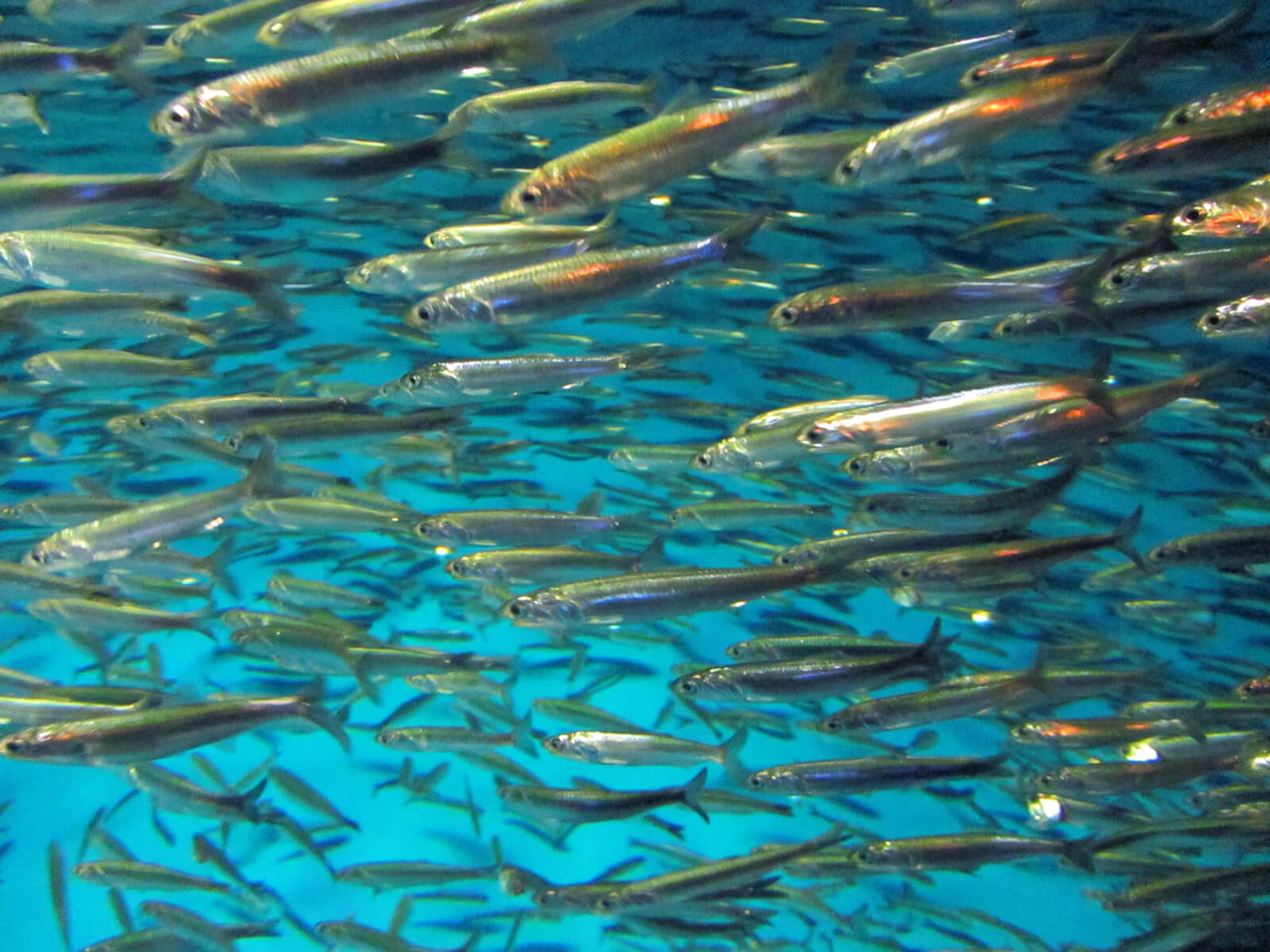
A school of anchovies (photo courtesy Geoff Shester/Oceana)
Basically, anchovies are small fish that we think of as baitfish. Preyed on by almost anything/everything else in the sea. The anchovy is crucial to the ecosystem of the oceans. Most are marine based, but a few can enter fresh or brackish water. There are apparently more than 140 species (144 from 17 genera), and they are found around the globe: the Mediterranean Sea, the Black Sea, and the Atlantic, Indian, and Pacific Oceans for starters.
The range tends to the temperate seas, avoiding very cold or very warm seas. For the boffins among us, almost all commercial anchovies come from the family Engraulidae and the genus Engraulis (I hope that helps). In length, they go from about two to 40 centimeters.
They are described as having tiny, sharp teeth and have a “unique rostral organ,” but its use is not clearly understood as yet. They eat even smaller fish and plankton. Spawning is believed to take place around 100 kilometers from land, a long journey for such a small fish. They provide food for a wide range of predators, obviously larger fish but also a variety of birds and marine mammals. They are also often used by fishermen as bait for larger fish.
Peruvian anchovies provide the vast majority of the commercial catch around the world (nearly 70 percent), with Japanese anchovies next (almost 20 percent), followed by European anchovies. Southern African and Californian anchovies form a much smaller part of the catch. The Peruvian anchovy industry is the perfect example of the dangers of overfishing. In the early 1970s the industry collapsed in a massive way, and it took several decades for it to recover.
Once caught, anchovies are traditionally processed by gutting and salting in brine to cure them before packing in more salt or oil. They have long played a crucial role in various fish sauces, back to the Roman days when they were fermented as garum (I had intended to cover the story of fish sauce for this piece, but reality struck – it would end up being the War and Peace of fish articles, in length at least). That role is still important today.
It is the curing process that accentuates the strong taste of anchovies. Caught and cooked/grilled fresh, they are much milder. The anchovies that attract the highest prices are those from the Gulf of Trieste at Sirocco. They are prized for their “white fleshy” character.
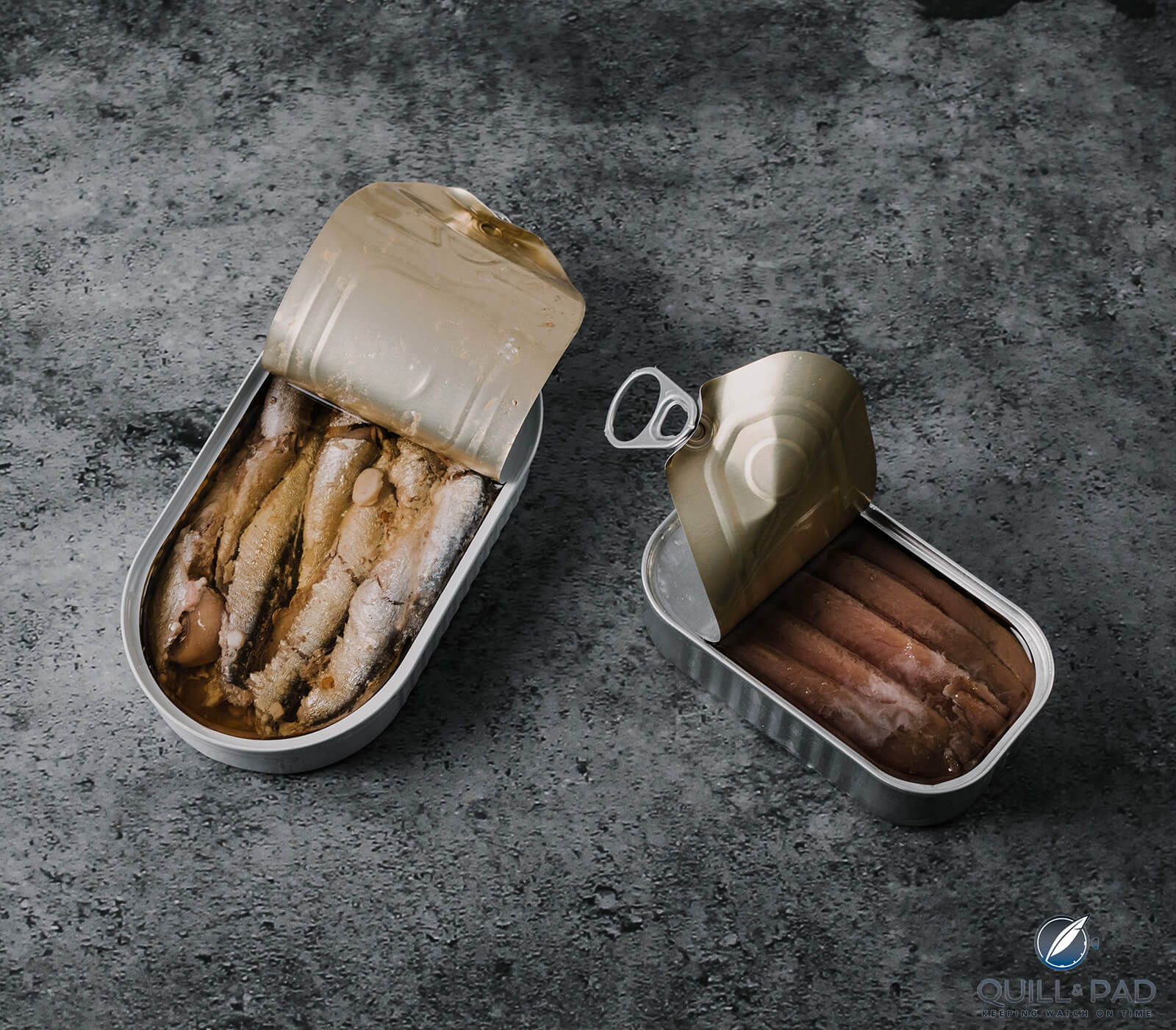
One reason for loving anchovies is that they are so important when it comes to adding that “umami flavor” to cooking. Fish sauce, essential.
That bottle of Worcestershire sauce in your cupboard (yes, we all have it)? A key ingredient is anchovies – you didn’t think it was vegan, did you? Anchovies are chockers with umami-producing glutamates. Clever cooks have known for years that a fillet or two minced into beef dishes gives it that extra richness.
And what would your Bloody Mary be without anchovies? Yes, go back to the Worcestershire sauce.
I remember an article from a while back that I loved saying that anchovies are not a love-it-or-hate it food. Rather, they were a love-it-or-you-have-not-discovered-how-good-they-can-be food.
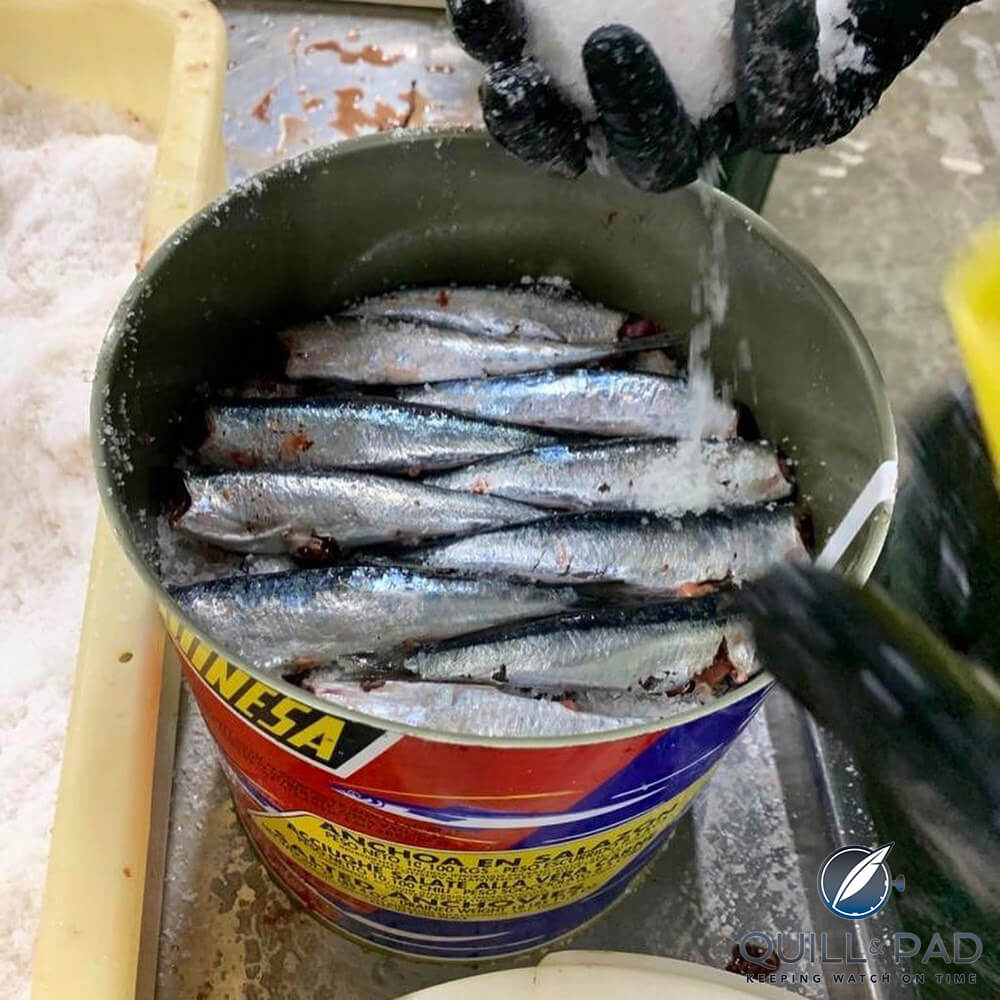
Think you avoid anchovies? I have news for you. You have no idea how often you eat anchovies in all manner of ways: salads, soups, stews, dips, sauces and, yes, even drinks. Pasta sauces? Yes, the secret ingredient that often lifts a sauce is anchovies.
The feeling among many who regularly cook with anchovies is that it does not really matter what anchovies you use if they are going into the cooking. But here, we are talking the top shelf. What we seek are the anchovies you serve straight on freshly baked bread with some oil. Perhaps a slice of tomato or a sliver of black garlic, but just bread and anchovies will do.
And I am not certain that I fully agree. Perhaps if you are adding a tiny amount to a rich beef stew, but if I am making something like a tapenade, there is no way I want anything but the best anchovies I can source. Olasagasti Filetes de Anchoa are ideal.
A Caesar salad dressing? Surely the very best anchovies are essential. If you like your gazpacho with anchovies (and I do), then they need to be the highest quality.
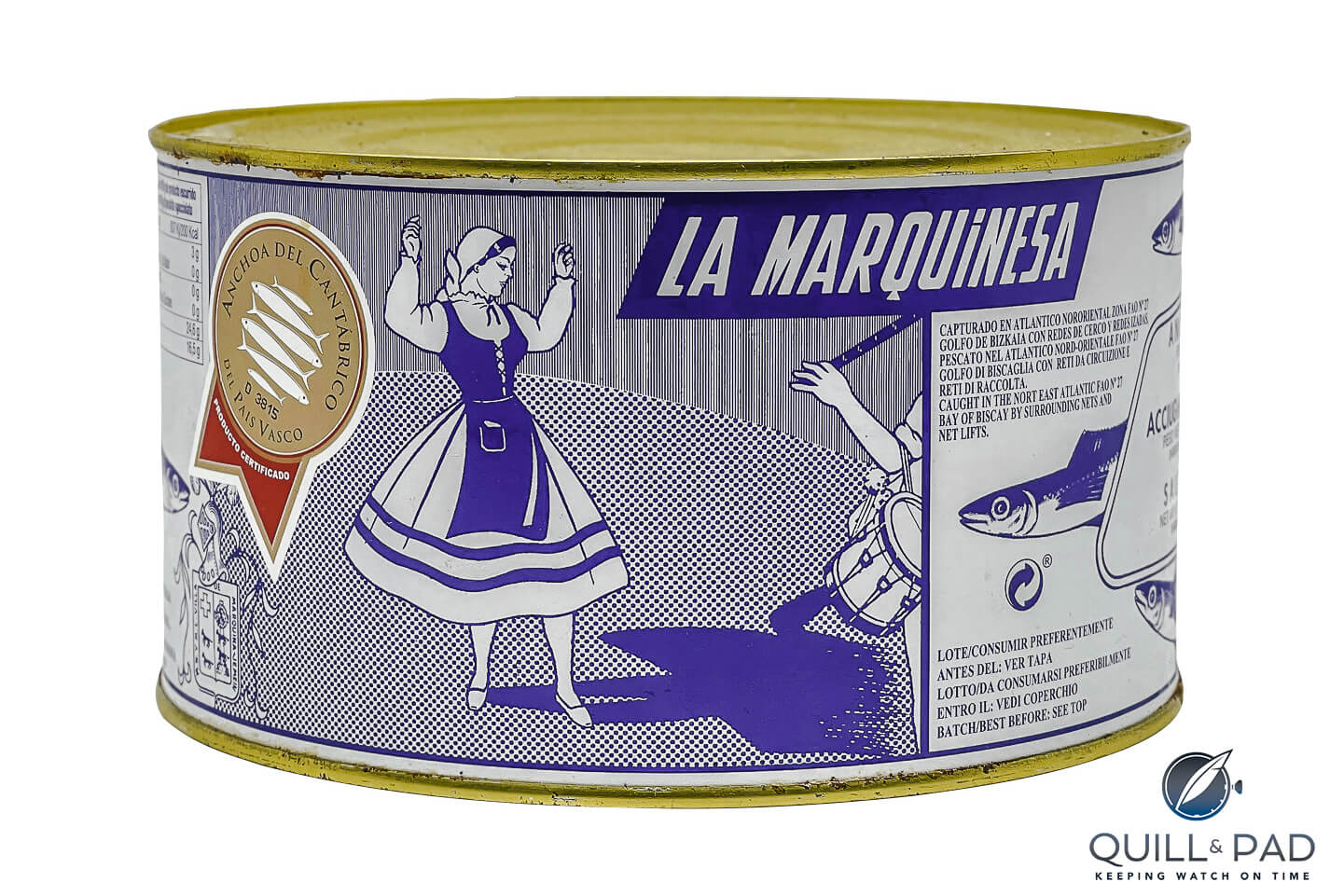
What of the health benefits? They tend to be considered sustainable, not being farm-raised in any way, although overfishing is a danger (so I tend to think that those pushing the “sustainable” line are perhaps taking liberties).
There are an awful lot of “mays” in this, but the overall conclusion is that anchovies are most certainly beneficial. They “may” improve heart health, “may” be rich in protein, “may” aid weight loss, “may” be anti-inflammatory, “may” prevent toxicity, “may” aid in skin care, “may” improve bone health, “may” aid in tissue and cell repair, “may” improve eye health, and “may” be rich in iron (talk about sitting on the fence). A warning: the same article from which I gleaned all these “mays” also announced that anchovies were an aphrodisiac – no “mays” about it. Go figure?
On the downside, if not cleaned properly (a good incentive to buy the good stuff), there is a possibility of parasites. And the salt is not a positive for those with high blood pressure.
The definition of a great anchovy? Properly but not excessively salted/cured. Well filleted – applies to any fish, of course. A freshness to the flavor. A relatively smooth texture. The degree of “fishiness” is really up to the individual. Not that you’ll be able to tell until it is too late, but the use of quality oil is essential if oil is used. Jars or tins? There seems no real difference.
Which is the best anchovy?
Ask an Italian and there is one answer. Ask a Spaniard and we have another. I suspect Peruvians have yet a different opinion. If ever you wanted a topic to debate, this is it. Google “best anchovies” and you’ll be reading for hours: revel in the fact that there are many wonderful sources of anchovies.
Anchovies, sometimes under other names (they have a myriad of names around the planet), are used in different ways in so many cuisines. Most famous is surely the tapas scene in Spain. In Barcelona, they are almost compulsory.
La Plata’s fried fat anchovies. The boqueron: anchovies, peppers and olives skewered together (called a Gilda and named after the Rita Heyworth character in the film Gilda). Visit the legendary La Boquería markets and try anchovies in so many ways – they call them the “jamón of the sea.”
In Madrid, artichokes with an anchovy sauce. Try the anchovy toast in Cádiz. Good luck finding a restaurant in Bilbao without an anchovy dish. In San Sebastián, vinegar-cured anchovies on crusty bread (those wonderful boquerones again). In Málaga, battered and fried anchovies.
So many options – these have not even begun to scratch the surface.
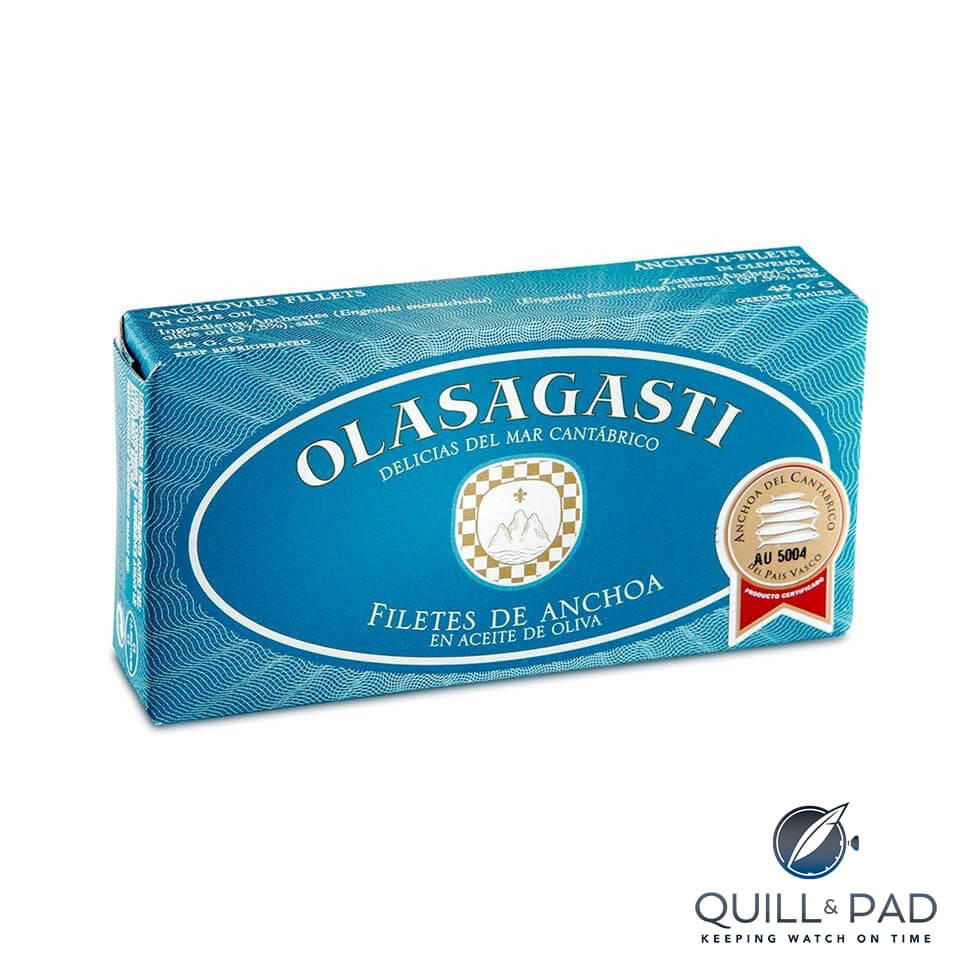
Just as aficionados will argue about the source of the best anchovies, so too will they argue about the best producers. Ortiz is a much-loved brand. Olasagasti is another, and many of the top tapas bars use their anchovies. They have been in business for well over a century, using the artisanal methods established by nonno Salvatore Orlando.
Orlando was from Sicily, but in the 1920s he was sent to the Basque village of Getaria, where there was an active Italian community at the time, by his family, who made their living from canning anchovies. The concept of salting factories was not known in the Basque country at that stage and the Italians introduced it. It seems likely that the family knew the quality of the Cantabrian anchovies and were keen to take advantage.
Salvatore married Simona Olasagasti and they had six children. The family moved to San Sebastián in the 1940s and established several factories along the Basque coast. He passed away in 1995. The family also sent members back to Italy to create an import company. The fourth generation runs the business today.
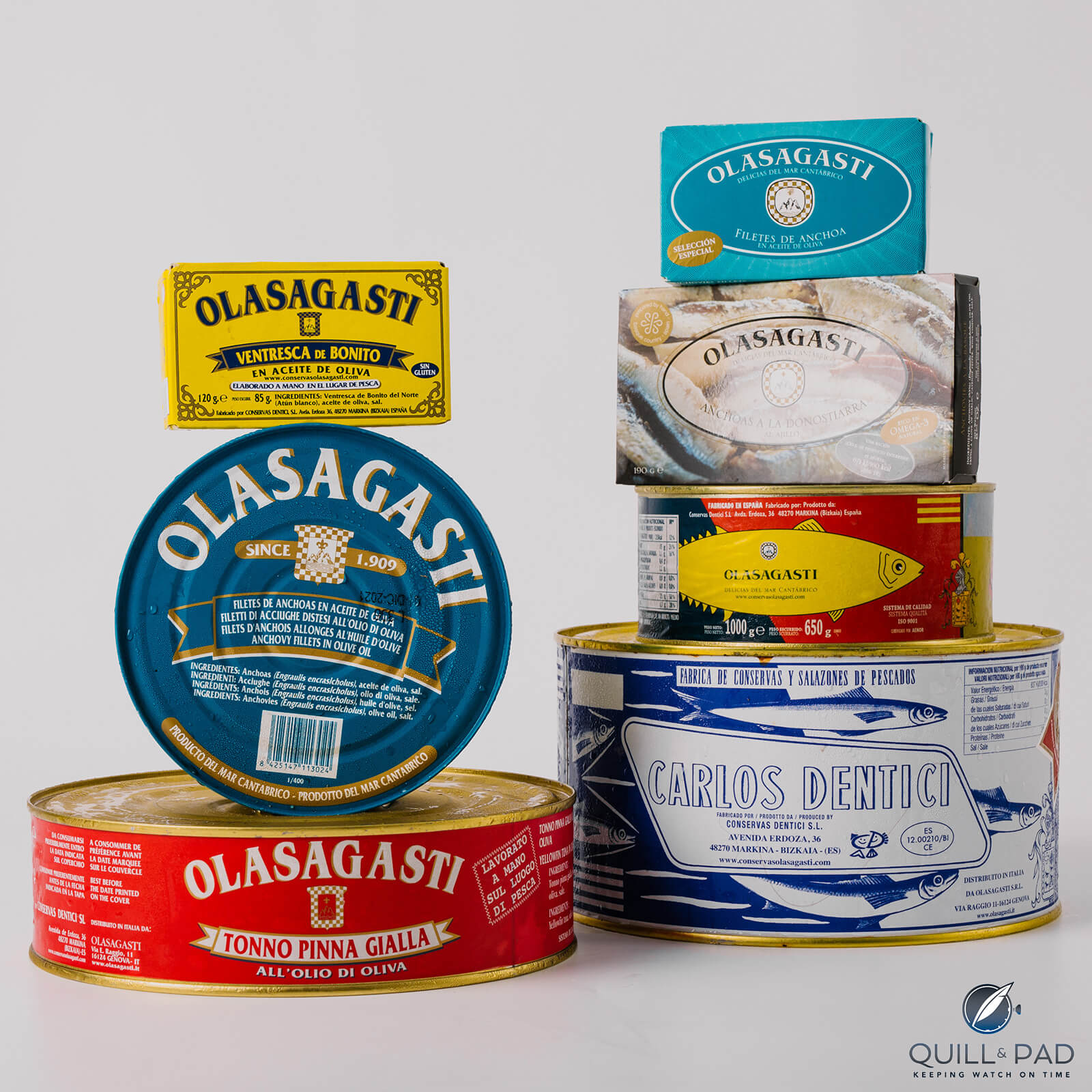
I tried Olasagasti’s Anchoas a la Donostiarra as a side dish with a very simple lemon and smoked paprika rice. Worked wonderfully (I should add that I am in no way a chef, nor have any pretensions to be one – my cooking is just for fun, based largely on what is at hand).
And for lunch a freshly baked loaf of hot, crusty bread smothered in more of the same was magic. And perfect with a glass of Fino Viña Corrales, though I am sure any good Fino sherry would work. Next, I plan on simply frying a few.
Anchovies are an incredibly versatile and important fish. And a seriously delicious one as well.
You may also enjoy:
Fino Viña Corrales Pago Balbaína: A Phenomenal Sherry!
Leave a Reply
Want to join the discussion?Feel free to contribute!



Do the little critters have fins? If so, and they have more than one, on which fin do they prefer to wear their watches?
Very good question!
I have no idea about watches but isn’t there one called a submariner? that might suit.
Lol, yes, Ken, the Rolex Submariner.
Salty, oily, and fishy are all qualities I hate in food, so no. lol
K, fair enough. I think you are missing out but each to their own.
What a fantastic article, Ken, thank you!
I’m definitely going to look out for Olasagasti the next time I am at a deli or fine foods shop.
I was never really aware of the magic of anchovies until I tried making Puttanesca pasta for the first time and was blown away by what they delivered to that dish, amazing.
Thanks, Greg. They are so versatile and so delicious. Love them!
This is the best – thank you for writing it. No one I know shares the anchovy love. Cheers!
Many thanks for the kind note. Great fun writing it.
Reminds me of a Futurama episode where they become the rarest and most expensive things on earth !
So apropos of this blog. 🤗
I enjoyed that show but i missed that episode. need to keep an eye out. And if i may share what is probably not a secret – it is a lot more fun to write about the good things in life than the mundane.
Very informative article! Anchovies, like olives, mushrooms and spinach was one of those foods I really didn’t like, but then I got older and and expanded my palate and now I always like to have a few cans of the stuff in the pantry.
Thanks, Thales. Still not keen on spinach. For me, brussel sprouts. hated them as a kid but enjoy them now.
To be fair, I think it is obligatory to hate boiled Brussel Sprouts! But sliced and stir-fried with streaky bacon and a touch of oyster sauce, they are lovely.
I love anchovies, sardines, herring etc.
As a Northern European, this sort of food is my birth-right. Another favourite is warm smoked mackerel on oatcakes with houmous, sprinkled with sea salt and smoked paprika.
And recently I thoroughly enjoyed scallop sashimi in a very respectable Japanese restaurant.
It’s strange to me that people will spend five hours on a beef stew trying to produce the same richness that you can get from simply opening a tin of anchovies. 😊
Thanks, Tam. Boiled Brussel sprouts. The horror!
As for the rest, you’ve made me very hungry indeed.
Ha!
This article inspired ME to visit a Spanish restaurant, where I had a thoroughly European breakfast for lunch.
Spanish sausage and cheese (which they drizzled with honey), anchovies, olives, a very decent selection of properly proven bread rolls and a good strong coffee.
Perfect.
Mrs Banter grew up 9,000km east of me. She could not see the attraction of anchovies. 😕
Great stuff, Tam. You’ll have to educate Mrs B yourself! I have spent several days trying to settle a new house which has proved an unbelievable nightmare. I have some offal sausages in the fridge, some black pudding, lamb sweetbreads and speck, all lined up for a celebratory dinner if I ever get it over the line. Fingers crossed.